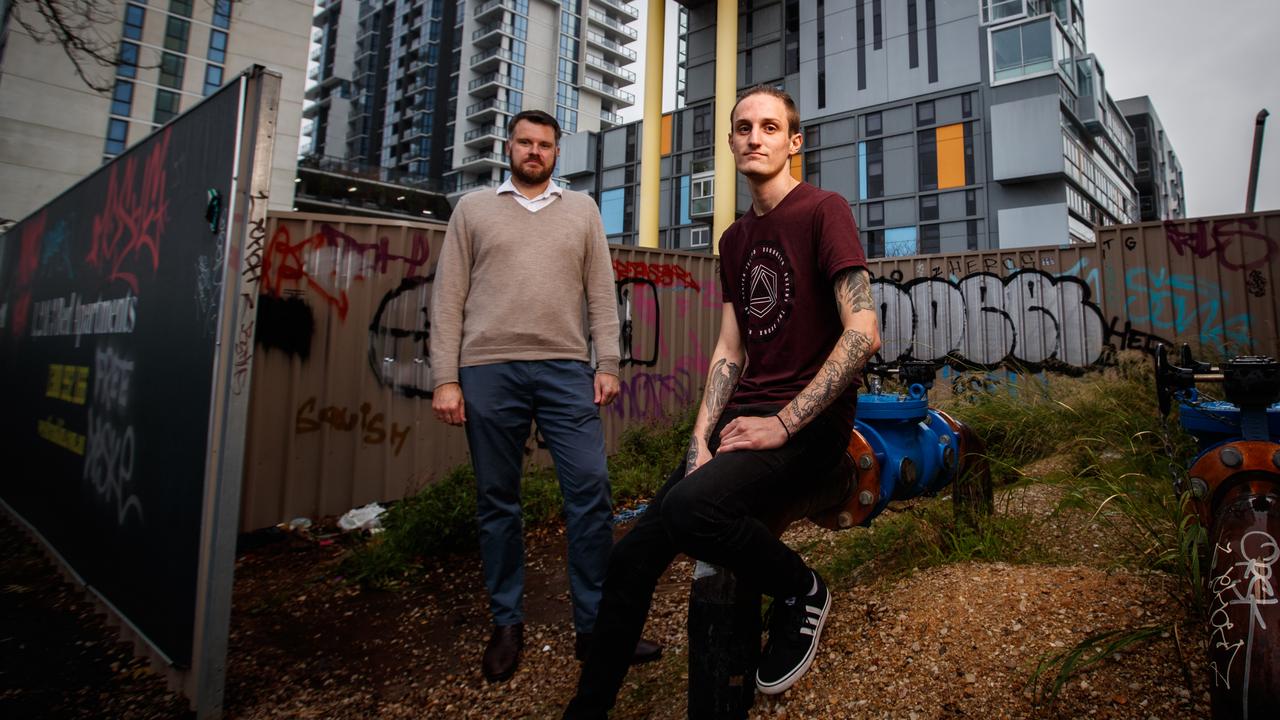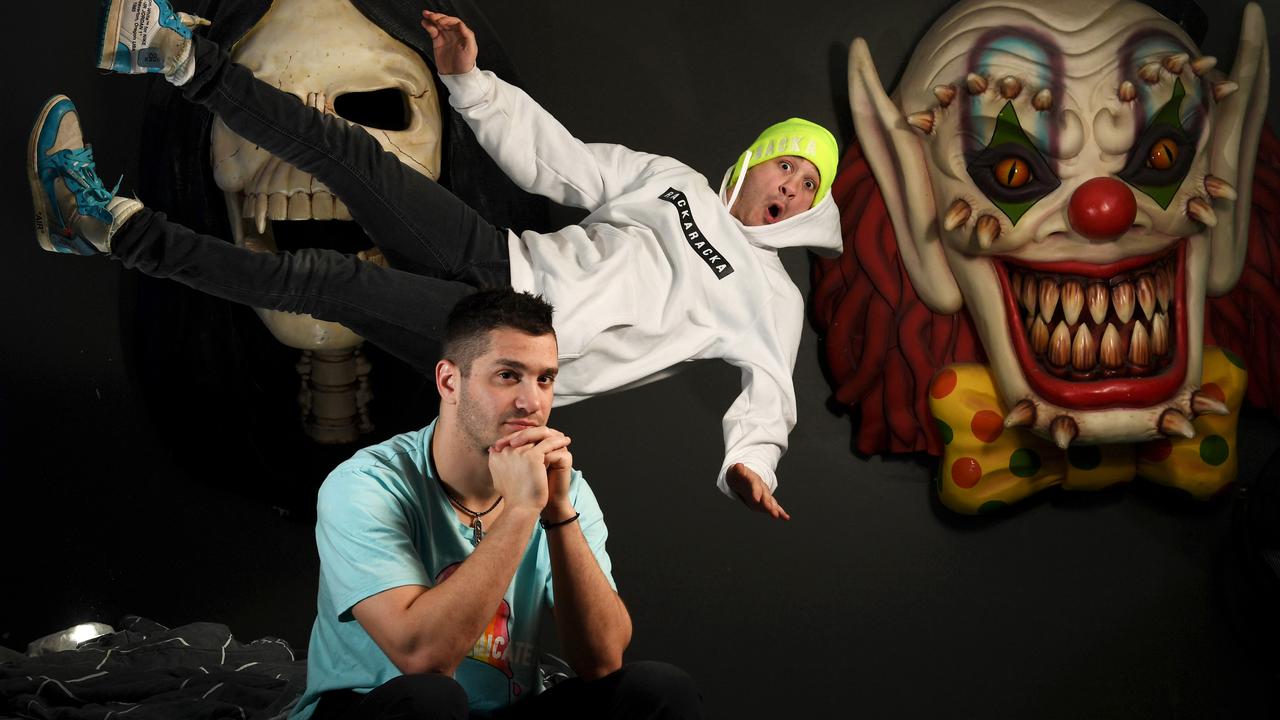What drives the Shahins: Inside one of SA’s most private and powerful families
Sam Shahin’s family has made a fortune from Smokemart and On the Run. In 2016, the billion-dollar business owner gave SA Weekend an unprecedented insight into one of SA’s most private and powerful families.
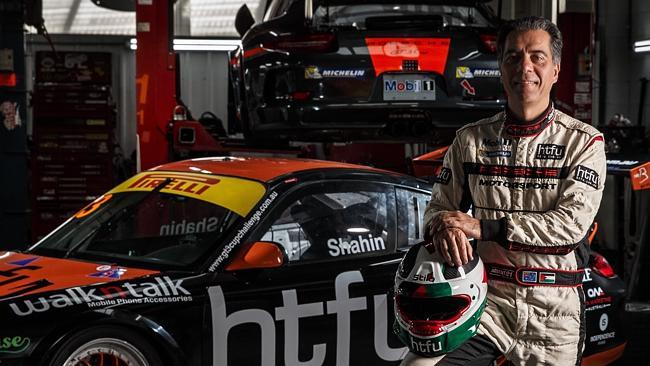
SA Weekend
Don't miss out on the headlines from SA Weekend. Followed categories will be added to My News.
SA Shahin-family owned petrol station chain OTR is set to be acquired by an ASX-listed corporation for $1.2 billion. In 2016, SA Weekend brought readers the details one of the state's most remarkable migrant success stories and had a closer look at what drives one of SA's private and powerful families.
Somewhere in Australia is the potentially lucky owner of what is inevitably now a clapped-out, red 1974 Datsun 120Y hatchback bomb, registration SAD 006. Impossible as it would be for the present owner to believe, their vehicle is highly sought-after by one of its early drivers — and one of South Australia’s richest men.
He’s a workaholic who, when he has a spare moment, still combs the car classifieds each weekend looking for his beloved “Datto”. Sam (Samer) Shahin has long moved on from his first motoring love, already 13 years young when he bought it for his first year at university.
“It was my freedom,” he effuses, while making the universal sign language for all those who enjoy driving, raising his arms perpendicular to his torso, as though holding a steering wheel.
Ninety-nine in every 100 120Ys, even 20 years ago, would have been deep in tall grass at the back of a wrecker’s yard or turned into tin pans somewhere in China. “Oh, I hope not,” Sam says before recommitting, as if talking to himself, to continuing the search anyway.
The hunt will be undertaken ironically in the moments while he is not planning his $80 million motorsport park at Tailem Bend.
I wouldn’t say this to the man affectionately referred to at the reception desk as Dr Sam (he used to be a GP) but, from a car fan point of view, his 120Y was already a bomb when it rolled out of the showroom. But the fact he is still seeking what is considered one of the least desirable cars on Australian roads speaks about his passion for all things with engines, great and small, but especially fast things that come under the umbrella of motorsport.
I have come to the Shahin’s Peregrine Corporation HQ at the corner of The Parade and Portrush Rd, Kensington Gardens, to talk about the motorsport complex, the plans for which I find have almost taken over Dr Sam’s office-cum-boardroom.
Sam, now in his late 40s, sits upright in one of a dozen “Monza” boardroom chairs, modelled on racing car seats, and named after the famed Italian Formula One circuit. They have replaced the “Bathurst” models that adorned the office the last time he and I talked, but still scream “petrolhead”.
His 120Y search and those black chairs with red vinyl trimming suggest a passion that all car lovers share. And passion is something the Shahin family have by the bucketload. Unlike their public image would suggest, it is passion not just for making buckets of cash.
Sam’s passion for cars reminds me of how misunderstood the Shahins can be.
To detractors, the family is a bunch of secretive, excessively successful, opinionated big shots. To polite critics, they are at best enigmatic. Others are more understanding and like the Shahins’ fusion of passion, performance, honour and family cohesion.
For example, they are passionate about the state, despite being relatively recent arrivals and experiencing a sometimes rocky road with those already living here.
As many know, the Shahins’ family story in South Australia began in 1984 when they arrived from Palestine via Lebanon, and first to an unwelcoming economy in Sydney.
Patriarch, the late Fathi (Fred) Khalil Shahin OAM, was a businessman and philanthropist, but before that he was a refugee.
Today it is said that the average Adelaide motorist cannot drive for more than two minutes without driving past one of the Shahin’s On The Run petrol station/retail/fast food outlets, and variously contributing to the family empire’s annual turnover of $1 billion.
The Shahin passion still burns, despite word on the street that they have already “owned” most of their fast-food competitors. Despite all that they have achieved, if you ask the Shahins, especially Sam, what the future holds for the family, it is hard to go past the all-encompassing motorsport park, its construction now underway just outside Tailem Bend.
Before being subjected to the Shahin touch, the barren 800ha (2000-acre) block at the corner of the Dukes and Mallee highways, to the southeast of Tailem Bend, was home to a former Mitsubishi car testing site, and not much else. To call it a patch of dirt would be to flatter the worthless sand that lies only centimetres deep above limestone bedrock, and sustains only the most unfortunate life forms.
From this almost lunar landscape, the riches in motorsport infrastructure that the Shahins hope to create are vast. Top of the list is a V8 Supercar-accredited track, which can also accommodate motorcycle racing and which, at its longest, can be a mammoth 9km or more. The shorthand version of the car races that the venue will be eligible to attract is everything except Formula 1.
Already, a second V8 Supercar event is planned for next year, a feat on its own, but which will pale into insignificance if Sam can lure a round of the premier global motorcycle competition, the MotoGP World Championship, for the track.
Unlike Adelaide’s Clipsal 500 street circuit, Tailem Bend will have a permanent main building and a 283m pits complex. It will include a 35-room hotel. There will be a four-storey race control tower, corporate facilities, function rooms and restaurants. The good people of Tailem Bend, just out of earshot — whether they realise it or not — have won the Lotto. The complex will have its own airstrip, quarter-mile drag strip, a drift racing circuit, go-kart tracks, rallycross, a 4x4 adventure park and bicycle and walking tracks.
Petrol-head heaven will be behind the main building, with 163 allotments for working on private vehicles — even Datsun 120Ys — in on-site garages before circuit testing.
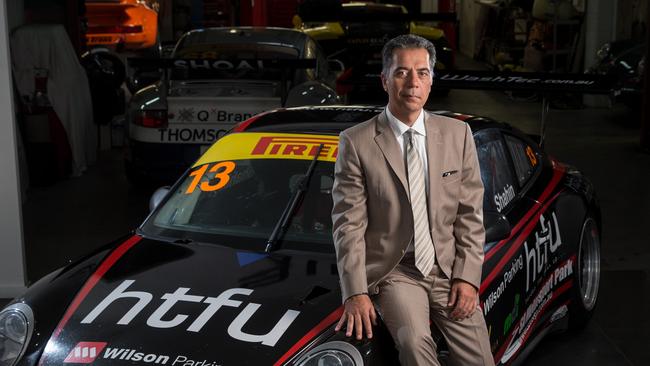
The Shahins think big. But to fully understand the motorsport park concept behind the bitumen and steel, you also have to know something of the Shahin fascination with vehicles. It began with Fred, as most things Shahin do.
“Dad always said ‘I’m sure all you boys will pick a habit and I hope you all pick up a nice clean one’,” Sam explains. “We had a very simple and straightforward life and we didn’t pick up any bad habits. Cars became my only vice. I love cars, my father loved cars and my brothers love cars.”
Even Fred’s boys’ daily drives stand out in the carpark at the back of the Peregrine Corporation HQ, where all the sons are directors. Sam runs the property portfolio, Smokemart, and giftbox empire. Brother Yasser is most directly involved with the time-consuming OTR. Yasser, who famously drew the ire of a police constable for driving a Rolls-Royce car with tinted windows, is also involved in the Tailem Bend project.
From the moment he upgraded from his old Datsun to a Holden VK Brock Commodore, Sam has been hooked on power and speed.
A Holden VL Walkinshaw Commodore followed and then a Group A Commodore. Sam ultimately graduated to a 400 horsepower 2010 Carerra Cup Porsche 997, which is kept in trim by Buik Motorworks at Keswick. They are names and numbers that mean nothing to the uninitiated, but they scream “leadfoot”.
“I’m getting a bit older now but I reckon I’ve got another year in me,” Sam says, slipping from his normally articulate self into the cliche of sporting parlance briefly to describe his racing career.
As his body became less willing to fulfil the driving dream, the motorsport park took over, he explains. It has been three years since Sam started his labour of love.
Navigating the bureaucratic and disjointed world of motorsport administration has made turning a paddock into a world-class facility challenging.
Fortunately for Sam, father Fred made the following proverb almost the family motto: “The best fertiliser for the land is the footsteps of the farmer”.
“I have to keep reminding myself how this all came about given the mostly difficult path that the development has encountered so far,” Sam says. “It has been a long gestation to even put a concept in place, despite there being a severe lack of facilities in South Australia, which is a state that has contributed to the motorsport culture of Australia.
“The state has also always punched above its weight in terms of the way we put on events, run events, and with the pool of motorsport champions we have contributed. Yet we have an embarrassing lack of national-standard, let alone international-standard facilities.
“I was astounded, for example, that the governing body of drag racing in Australia is based in Adelaide and yet we are the only state that does not have a national-standard drag racing facility.”
Bureaucratic red tape, procurement problems, and dealing with international sports regulatory bodies are all hurdles Sam has become used to.
“After doing this for three years, I can see why motor racing circuits are not often built. I can see how these things just don’t happen,” he says diplomatically. “The scale of the infrastructure work alone is frightening. The obstacles are immense, the path is long and convoluted and there are numerous regulatory steps, numerous approvals that have to all line up and in the correct sequence to enable us to stay on track.”
No wonder nothing of the Tailem Bend project’s scale has been attempted in Australia for decades.
The Shahins know about life in the trenches. Through the decades, the family has attracted as much negative publicity as positive. Fred was criticised as a purveyor of deadly cigarettes, the Woodville mosque he paid for raised the ire of local residents, as did the family enclave of half-a-dozen houses in one part of Burnside, ranging in cost up to $5 million and on blocks of up to 5321sq m.
Then there was the paradox of Sam being a GP and heir to a cigarette fortune, and criticism of the giant “candystick”, or former Commonwealth Bank building on the corner of King William and Hindley streets that, when redeveloped, prompted the Australian Democrats to call for an overhaul of the Development Act.
If, or more likely when, the motorsport park is finished, it may dwarf any negativity of the past. Sam is acutely aware that the complex will be the subject of considerable state pride, and a monument to the Shahin name.
He is also aware that there are those who think it will never happen. He estimates that number to be about half of those who hear about the idea.
“I can also see why there are a lot of doubters out there,” Sam says.
“Five out of 10 people get a glazed look in their eye and you can tell they are thinking, ‘I have heard all this before’ and ‘here is someone else with an idea that won’t happen’. That is why I haven’t been out there selling the merit of how great this project can be but we have been just getting on doing it. Head down, bum up, going as fast as humanly possible.”
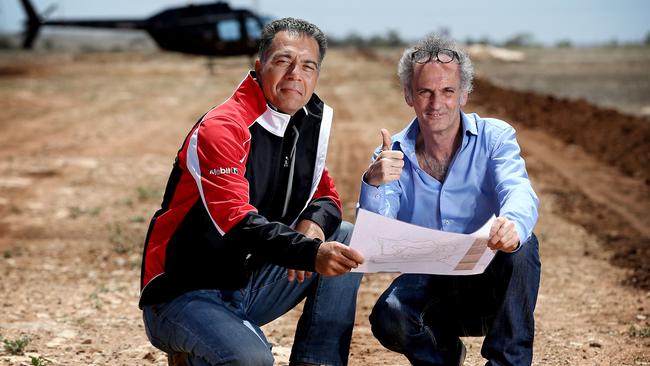
Almost certainly the doubters have underestimated the Shahin family’s quiet determination.
While many Adelaide 10-year-olds struggled to endure bushwalking with their parents, at that age Fred and his dispossessed family in 1948 trekked for weeks from Qabba in Palestine to Lebanon, where their first home was a tent in a refugee camp. Resettled, Fred won a job as a 17-year-old clerk with the UN and, armed with a diploma in accounting from night school, eventually rose to head of logistics caring for Palestinian refugees in Lebanon.
With wife Salwa, the couple had four children — Charlie, Sam, Yasser and daughter Amal. Amal is also a doctor. Sam (Samer) was born in 1968 and lived in an apartment in civil-war-torn Beirut until he was aged 16. But as the Lebanese civil war — which began in the mid-1970s — dragged on, and the Israelis invaded in 1982, the family became desperate to get out.
In one of the great ironies of the modern history of SA’s economy, the family that now boasts an annual turnover of $1 billion from its retail empire, had their application refused by the Australian embassy in Beirut.
“We came here on appeal and we pleaded with the then ambassador to look at our case again,” Sam says. “We had no money, poor English language skills and few employment prospects but fortunately (for) whatever they eventually saw in us, we are very indebted and grateful.”
Two of Sam’s uncles lived in Sydney, and the family was allowed to migrate based on family reunion rules. But with work impossible to find, and language skills a significant barrier, the family again decided to move on. In Sydney, Sam, who went on to become the dux of Woodville High School in 1985 and completed medicine at Adelaide University, was told he would have to repeat Year 10 despite having completed Year 11 in Beirut, and his older brother was offered no credit for his tertiary study to date.
“Dad, on a map of the world, with a piece of string, put one end on the equator and one end on Palestine, swung it down to the south of the equator and it landed on Adelaide, and so we moved to Adelaide,” Sam explains.
“We jumped in the car, a 1976 Mazda 929, and the engine memorably blew up in Gawler, so we didn’t start too well in South Australia. But we were determined to succeed and it is a very powerful mindset to have when failure is not an option. And we have resisted the temptation ever since to uproot ourselves from South Australia and I feel South Australian down to my bones.”
Fred, then 47, used his and his wife’s $200,000 life savings from almost 30 years of work with the UN in Beiruit, and her work for 27 years as a teacher in UN refugee camps, to buy a Woodville service station. The Advertiser classified advertisement from August 4, 1984, that the family responded to still takes pride of place at the Peregrine HQ lobby.
“Freehold service station workshop and adjoining property for genuine sale. Excellent opportunity for a family investment,” it says.
The teenage Shahin boys lucked in with the man, who sold them the asset, Bob Montine, a mechanic, who agreed to stay on to show them the ropes.
“Dad just wanted a job that had a future,” Sam says. “But the luckiest thing about that tiny service station is that it had a house behind it to live as well. We had no idea, but it became the best place we could have landed.
“I have come to believe that language is the core element of success for every migrant in Australia. Bob and the daily interaction of the driveway service was the best way to learn the language. Someone would unwind the window a crack because it was 45 degrees and say ‘fill ’er up, cobber’ and I would run inside to Bob and say ‘Bob, he called me cobber’ and Bob would say, that’s good, get out there and fill it up with petrol.
“Or someone would stick a $10 note out of the crack because it was raining and say ‘fill ’er up, Digger’ and I would run in and say ‘Bob, he called me Digger’ and Bob would say ‘that’s excellent, now get out there and fill his tyres with air as well and see if you can sell him half a litre of oil’.”
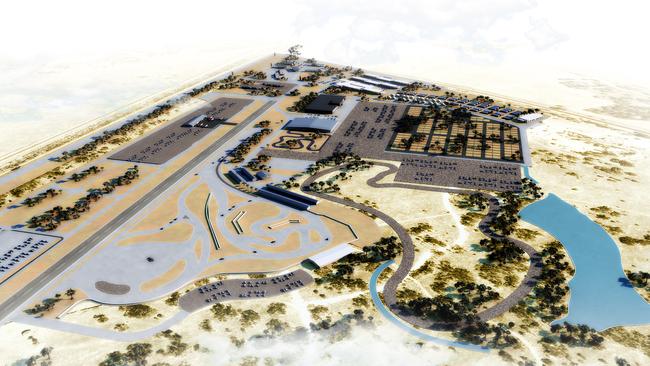
Ten years after Fred combed the pages of The Advertiser looking for opportunities, he was quoted in a feature story in the same newspaper trumpeting his success: “I came to Australia with $200,000 and now 10 years later make a profit of $2 million a year”.
By then, a small petrol operation had morphed into limited station-based food outlets and cigarettes through the Smokemart chain. What followed was the virtual invention of the modern supermarket/petrol station in SA at a time when most people wouldn’t touch “servos” because there was no margin in fuel retail. Old servos selling lukewarm pies were replaced with the Shahin version; Brumby’s Bakeries and Subway, barista coffee and Krispy Kreme doughnuts.
By the time Fred died, aged 70 in 2009, turnover was $576 million.
The name of the Shahins’ On The Run outlets could be a metaphor for the way in which they have risen to the top of the state’s business community. Rumour has it the family has an annual turnover of $2 billion a year. Officially it is $1 billion, as Sam corrects me with a wave of his index finger when I inquire.
The Shahins are self-confessed junkies of everything South Australian, choosing to remain based here even after their business empire grew beyond 10-figure annual turnover. The family’s success has also arguably given it the right to think it can teach South Australians a thing or two about survival and prosperity.
“There is little focus on the positive things that happen every day in our state and our country,” Sam says. “Doing nothing is the option most people defer to because if it is too hard, it costs too much, the viability is uncertain. And you find when you ask yourself these questions, which I do every day, that there are things worth fighting for and the motorsport park has been the epitome of that.”
Sam hopes the venture will be nothing less than an inspiration to all South Australians in troubled economic times.
“It goes back to the core of what you are about, who you are and what you want your legacy to be,” he says. “Our desire is to contribute something back to this great state which has provided us with such great opportunity. We are very parochial South Australians and I fly the flag as often as I can.”
There is another aspect to the ambitious motorsport park concept.
As good as the Shahins are at making money, the Tailem Bend facility may just become the greatest philanthropic contribution ever to the state. Fred Shahin famously, in 1997, donated $5 million to establish the Islamic Arabic Centre and the Al Khalil Mosque at Woodville. It was at the time one of the most significant single charity donations in the state.
And with only a small fraction coming as a contribution from the taxpayer, it is possible the Peregrine Corporation coffers will never again see the money it is sinking into the transformation of Tailem Bend.
“The business case for the motorsport park is a very tough one, because creating a market is very tough, and there is not other motorsport park like it in Australia, so we don’t know what the market is,” Sam says.
The park is yet to be named, but the smart money will be on “Fred Shahin Motorsport Park”. And the project is a fitting but ironic tribute to the elder Shahin, a man who, as the Palestinian people were being driven from the homeland in the 1940s, handmade his first pair of shoes from an old car tyre.
“Fred watches over everything we do,” Sam says. “I talk to him daily; he is always with me. He was a great man and I owe every ounce of success I have in my life to him.”

